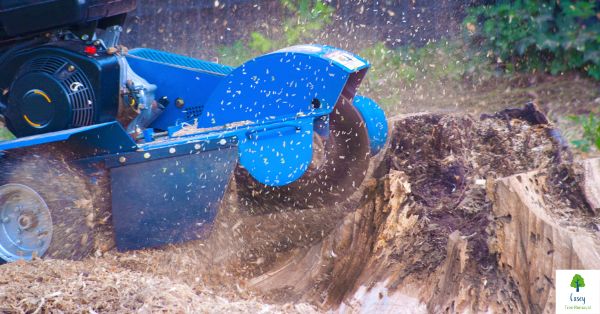Introduction
Stump grinding is a common and effective method for removing tree stumps from your property, leaving you with a cleaner and more functional landscape. However, what happens to the tree’s roots after stump grinding? This is a common question among property owners. In this article, we’ll delve into the fascinating world of tree roots and explore what occurs to them after stump grinding.
- Decomposition
After stump grinding, the remaining roots of the tree begin to break down and decompose naturally. Microorganisms in the soil, such as bacteria and fungi, play a crucial role in this process. These microorganisms feed on the decaying organic matter, gradually breaking down the roots over time.
- Nutrient Release
As the roots decompose, they release valuable nutrients into the surrounding soil. These nutrients include carbon, nitrogen, phosphorus, and other organic compounds. Over time, this nutrient-rich organic matter enriches the soil, providing benefits for nearby plants and trees.
- Soil Aeration
The natural decomposition of tree roots improves soil aeration. The breakdown of organic matter creates small pockets and channels in the soil, allowing for better air circulation. Improved soil aeration benefits the growth of other plants and can help mitigate soil compaction.
- Enhanced Soil Structure
The decomposition of tree roots contributes to improved soil structure. It enhances the soil’s ability to retain moisture and nutrients, making it more conducive to healthy plant growth. The organic matter from decomposed roots acts as a sponge, helping the soil hold water and reduce runoff.
- Beneficial Microbial Activity
The decaying roots also foster the growth of beneficial soil microorganisms. These microorganisms play a vital role in nutrient cycling and plant health. By breaking down organic matter, they release nutrients into the soil that are essential for the growth of nearby plants and trees.
- No Need for Root Removal
One of the significant advantages of stump grinding is that it eliminates the need for extensive root removal. Traditional root removal can be a labor-intensive and costly process, often involving heavy machinery and excavation. Stump grinding is a more efficient and environmentally friendly method that leaves the roots to decompose naturally.
- Landscaping Opportunities
The area where the tree once stood becomes more accessible for landscaping projects and gardening. With the removal of the stump and the natural decomposition of the roots, you have a clean slate for creating new plant beds, lawns, or hardscape features.
- Patience is Key
The decomposition of tree roots after stump grinding is a gradual process that requires patience. It may take several years for the roots to break down entirely, depending on the tree species and the size of the roots. During this time, you can monitor the area for regrowth and adjust your landscaping plans accordingly.
Conclusion
Stump grinding not only removes the visible part of a tree stump but also initiates a natural process of root decomposition. The breakdown of tree roots enriches the soil, provides valuable nutrients, improves soil structure, enhances soil aeration, and fosters beneficial microbial activity. This environmentally friendly approach to stump removal ensures that the remnants of the tree continue to contribute to the health and vitality of your landscape long after the stump is gone.
Casey Tree Removal – All Tree Services including Tree Cutting, Tree mulching, Tree Trimming, Stump Grinding, Tree Pruning, Stump Removal, Emergency Tree Removal Experts In Melbourne!
Click here to read more articles regarding tree removal & related services.
If you are in Guys Hill, and looking for Casey Tree Removal, below is the best way to visit us.


Recent Comments